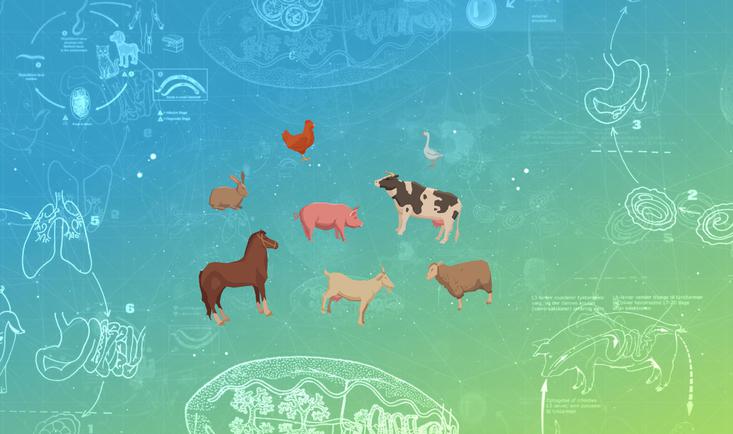
当前课程知识点:Hydraulic Power > Chapter 9 Design of Hydraulic Transmission System > Homework-Chapter 9 > 3.3Hydraulic Motors - 1 Operating Principle
In this class, we will study low-speed motors.
Low-speed motors are usually radial piston motors.
They possess high pressure and large delivery to meet the needs of low speed rotation and large torque.
Because of their large size and large moment of inertia,
they are not suitable for the applications which require rapid response and frequent direction changing.
Low-speed motors may be further classified based on how they function:
1) single-acting motors which provide a push in one direction;
2) double-acting motors which provide push in both the directions;
3) multiple-acting motors which provide push in many directions.
Single-acting connecting rod type radial piston motors
This figure shows the operation of a single-acting connecting rod type hydraulic motor.
The motor is composed of a case, a connecting rod, a piston assembly, a crank, a valve shaft, etc.
Five cylinder blocks are arranged radially against the spherical surface of case 1 with an equal distance apart forming a star-shaped cylinder block.
The pistons 2 are set in the cylinder block and connect with connecting rods 3 through spherical hinges.
The connecting rod larger heads with saddle-shape circular surface bear against the offset circular of crankshaft 4.
The center of the crankshaft is O1 and has an offset e with respect to the rotation center O of crankshaft, i.e., OO1=e.
Valve shaft 6 and crank 4 joint together through a cross key and rotates with the crankshaft.
Pressurized oil is distributed to the corresponding piston cylinders by the valve shaft.
As shown in this figure, cylinders 1, 2 and 3 connect with high pressure oil and the pistons are subjected to high pressure oil;
while the other cylinders connect with the outlet port.
According to crank and connecting rod mechanism operation,
there is a tangential force Ft on each one piston and forms a torque T against the center of bend axes.
The torque T makes the bend axes to rotate by anticlockwise direction.
The torque acting on each piston changes with three different positions,
thus the total output torque equals to the sum of torques where locate at the three high pressure chamber of each piston.
The bend axes drives the valve shaft when it is in rotation.
So the bend axes is rotated continuously with the flow-deploying state changes.
The motor will turn in the opposite direction simply by changing the inlet and outlet ports.
What has been described above is a motor with stationary case and shaft rotation.
The case will turn simply by fixing the shaft and connecting the inlet/outlet oil with the valve shaft directly, forming a so-called Wheel Motor.
The delivery for single acting radical-plunger type motors is expressed by this formula.
where d is the diameter of the plunger, e is the eccentric distance of the crankshaft and z is the plunger number.
Structure features:
They have the advantages of concise structure, working reliability, but are large in size and heavy.
They exist torque pulsation and poor stability at low speed.
However, motors of this type have been improved recently by employing static-pressure supporting
or static-pressure balance mechanism for the main friction pairs, allowing a lowest speed of 3 r/min.
Incurve multiple-acting radial piston motors
As shown in this figure, the typical design consists of a stator 1, a rotor ( cylinder ) 2, pistons 3, valve shaft 6, etc.
The inner surface of the stator 1 is composed by multiple identical curves with an equal distance apart.
The number ( six here) of the curve surfaces equals the action times of the motor.
Two identical regions are divided at the concave bottom of each curve,
one is the inlet region (working region), the other is the returned region.
Several piston bores are arranged radially on rotor 2 with an equal distance apart (eight here).
The piston heads contract with beams 4, which can move freely within the radial grooves of the cylinder block.
Rolling wheels 5 on the journals at the two ends of the beam can roll around the inner surface of the stator.
The inner bores of rotor 2 and the outer circular of valve shaft 6 match up to allow a sliding behavior of the shaft.
An oil distribution port at each bottom of the piston bore is the same as that at valve shaft 6 in cylinder.
The valve shaft is stationary and there are two oil distribution ports on it,
each port having the same number as that of stator curves.
One group of oil distribution port A connects with the inlet port of the valve shaft center,
while the other group B connects with the returned oil path.
This two groups of oil distribution ports are exactly located in the inlet and outlet regions respectively.
When pressurized oil enters into the motor, it is distributed into each chamber of the piston bottom at the inlet region
through the inlet port on the valve shaft, forcing the pistons to extend out.
The rolling wheels bear against the inner surface of the stator.
The inner surface of the stator produces a normal reaction force F, which can be decomposed into two branch forces:
a radial branch force Fr and a tangent branch force Ft.
Fr is balanced out with the hydraulic pressure acting on the back end of the piston,
while Ft develops a torque at the shaft through the beam.
At the same time, the pistons at the returned oil region retract under pressure
and the low pressure oil discharges out through the returned oil port.
Each piston will move to-and-from six times per revolution of the rotor.
At each instantaneous moment, part of the pistons will be at the inlet region to make the cylinder turn
due to the different numbers of curve surfaces and that of pistons.
In a word, x curve surfaces will produce x to-and-from motions of piston per revolution of the cylinder, and thus x action times of the motor.
The motor will turn in the opposite direction simply by changing the inlet and outlet ports of the motor.
Most of the incurve motors are fixed delivery type motors.
The delivery of this type is expressed by this formula.
where d is the piston diameter; s is the piston stroke; x is the action times;
y is the number of the piston rows; z is the number of pistons in each row.
Incurve multiple-acting radial piston motors have a low torque pulsation,
balanced radial force large startup torque and can move steadily at low speed.
They find many applications in engineering architecture,
lifting and conveying machinery, coal mine, shipping, agriculture, etc. Here, the whole content of this lesson is finished.
That's the whole content of this lesson. We have learned low-speed motors. In the next lesson, we will study selection principle of hydraulic pumps and motors.
See you next class, bye!
-Homework-chapter 1
-2.1 fluid mechanics Introduction
-2.5 Characteristics of fluid flow in pipeline
-2.6 Orifice flow and clearance flow
-2.7 Hydraulic shock and cavitation
-Homework-chapter 2
-3.2Hydraulic Pumps - 1 Gear Pumps
-3.2Hydraulic Pumps - 2 Vane Pumps
-3.2Hydraulic Pumps - 3 Piston Pumps
-3.3Hydraulic Motors - Low-Speed Motors
-3.3Hydraulic Motors - 1 Operating Principle
-Homework-chapter 3
-4-1 Hydraulic cylinder cocenpt and application
-4-2 Hydraulic cylinder construction
-4-3 Hydraulic cylinder speed thrust performance
-4-4 Hydraulic cylinder Calculations
-Homework-chapter 4
-5-1,Introduction of Hydraulic control valve-
-5-2,hydraulic control valve, Check valve-1
-5-2,hydraulic control valve, Directional control valves-2
-5-3,pressure operated valves, Directional -1
-5-3,pressure operated valves, Pressure-reducing valves -2
-5-3,pressure operated valves,Sequence valves -3
-Homework-chapter 5
-6.1Auxiliary components--Accumulators
-6.2Auxiliary components -Filters
-6.3Auxiliary components--Reservoirs and heat exchanger
-Homework-chapter 6
-7.1 pressure control circuit -1
-7.1 pressure control circuit -2
-7.2 velocity control circuit -1
-7.2 velocity control circuit -2
-7.2 velocity control circuit -3
-7.3directional control circuit
-7.4 circuit of two actuators-1
-7.4 circuit of two actuators-2
-Homework-chapter 7
-8_1 Classification of hydraulic Transmission systems
-8_2_1 Examples_Power-slipway for combined machine tools
-8_2_2 Examples_Injection molding machine
-8_2_3 Examples of Crawler excavator
-Homework-chapter 8
-9_1 Design of hydraulic systems (theory)
-9_2 Design of hydraulic systems (application)
-Homework-Chapter 9

